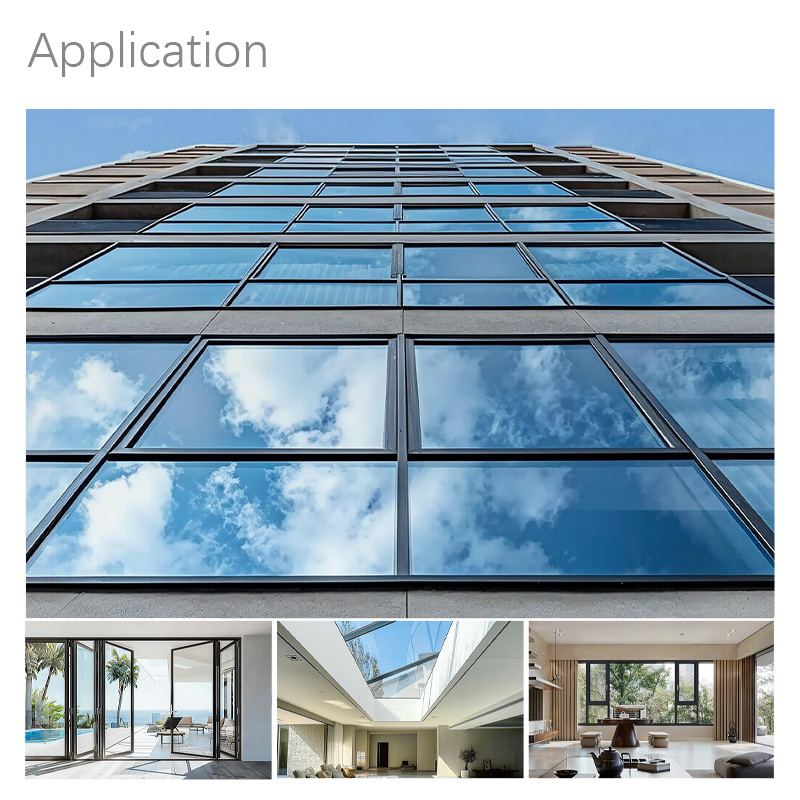Aluminium profiles have become an essential component in modern architecture, particularly for windows and doors. Known for their durability, lightweight nature, and aesthetic flexibility, these profiles are increasingly preferred in residential, commercial, and industrial projects. As 2026 approaches, several key trends are shaping the aluminium profiles market, offering insights for architects, contractors, and developers looking to integrate high-quality solutions.
Rising Demand for Aluminium Profiles in Windows
Windows play a critical role in energy efficiency, security, and design. Aluminium profiles for windows are highly valued because they combine strength with slenderness, allowing for larger glass panels without compromising structural integrity. Builders are increasingly selecting aluminium frames for their:
Energy efficiency: Advanced aluminium profiles support double or triple glazing, enhancing insulation and reducing energy costs. Thermal break technology in profiles minimizes heat transfer, making buildings more sustainable.
Durability: Unlike wooden or PVC frames, aluminium resists warping, corrosion, and fading over time, providing long-term value.
Design versatility: Aluminium can be powder-coated or anodized in various colors and finishes, matching diverse architectural styles.
In commercial projects such as office buildings and shopping complexes, aluminium window profiles are favored for their ability to support expansive glass facades while maintaining stability and elegance.

modern doors & windows aluminium profiles
Aluminium Profiles for Doors: Strength Meets Style
Doors serve as both entry points and design statements. Aluminium profiles for doors offer unmatched performance in terms of strength, longevity, and modern appeal. They accommodate various door types, including sliding, folding, and hinged doors, and offer key advantages such as:
Security: Reinforced aluminium profiles enhance the overall strength of doors, providing reliable protection without heavy or bulky frames.
Weather resistance: Aluminium doors withstand extreme weather conditions, making them suitable for coastal areas and climates with high humidity.
Customization: Aluminium frames can be tailored in terms of color, texture, and size, allowing for seamless integration with interior and exterior designs.
With commercial buildings and luxury residential projects increasingly focusing on aesthetics without compromising performance, aluminium door profiles remain a top choice.

Aluminium Profiles for Windows & Doors
Top Trends in Aluminium Profiles for 2026
Several trends are shaping the aluminium profiles market for doors and windows in 2026. Staying informed about these developments helps buyers make smarter choices.
1. Slimmer, More Minimalist Frames
Architects are trending toward minimalism, emphasizing clean lines and maximized glass surfaces. Aluminium profiles for windows and doors are being engineered to be slimmer without losing strength, offering unobstructed views and modern visual appeal.
2. Enhanced Thermal Performance
Energy codes and environmental regulations are pushing manufacturers to innovate. Aluminium profiles with improved thermal breaks and insulation systems are reducing heat loss, making buildings more energy-efficient and compliant with stricter standards.
3. Smart Integration
Aluminium profiles are increasingly designed to support smart home features. Frames that accommodate motorized or automated windows and doors, sensors, and advanced locking systems are gaining traction in both residential and commercial applications.
4. Eco-Friendly Manufacturing
Sustainability is no longer optional. Manufacturers are focusing on recyclable aluminium profiles, reducing carbon footprints during production while maintaining high-quality standards. Buyers and developers are prioritizing products that contribute to green building certifications.
5. Wide Variety of Finishes
From wood-grain effects to metallic and matte textures, the demand for visually appealing finishes continues to grow. Modern projects increasingly combine functionality with decorative aesthetics, and aluminium profiles provide flexibility in design without compromising performance.
windows & doors aluminium profiles supplier
Selecting the Right Aluminium Profile Supplier
Choosing a reliable supplier is crucial to ensuring quality, timely delivery, and technical support. Key factors to consider include:
Customization capabilities: Ability to produce profiles in various sizes, shapes, and finishes to match specific project requirements.
Technical expertise: Support for thermal, acoustic, and structural optimization.
Compliance with standards: ISO-certified products that meet international quality and safety benchmarks.
Experience in commercial projects: Suppliers with a portfolio of high-profile projects often provide valuable insights and solutions.
Hao Mei, as a leading aluminium profile manufacturer in China, specializes in providing tailored solutions for both windows and doors. With extensive experience and advanced production facilities, the company ensures that every profile meets stringent quality and design standards.
Conclusion
Aluminium profiles for windows and doors are shaping the future of construction and architecture in 2026. Their durability, versatility, and modern design capabilities make them an essential choice for developers, architects, and builders. Trends such as slimmer frames, enhanced thermal performance, smart integration, and eco-friendly production highlight the ongoing innovation in the aluminium profiles industry.
Selecting the right aluminium extrusion supplier ensures not only high-quality products but also technical support and design flexibility. By staying informed about these trends, buyers can make confident decisions that combine aesthetics, performance, and sustainability.
For projects seeking reliable aluminium profiles for windows and doors, partnering with an experienced aluminium extrusion manufacturer like Hao Mei guarantees a solution that balances strength, style, and efficiency.


